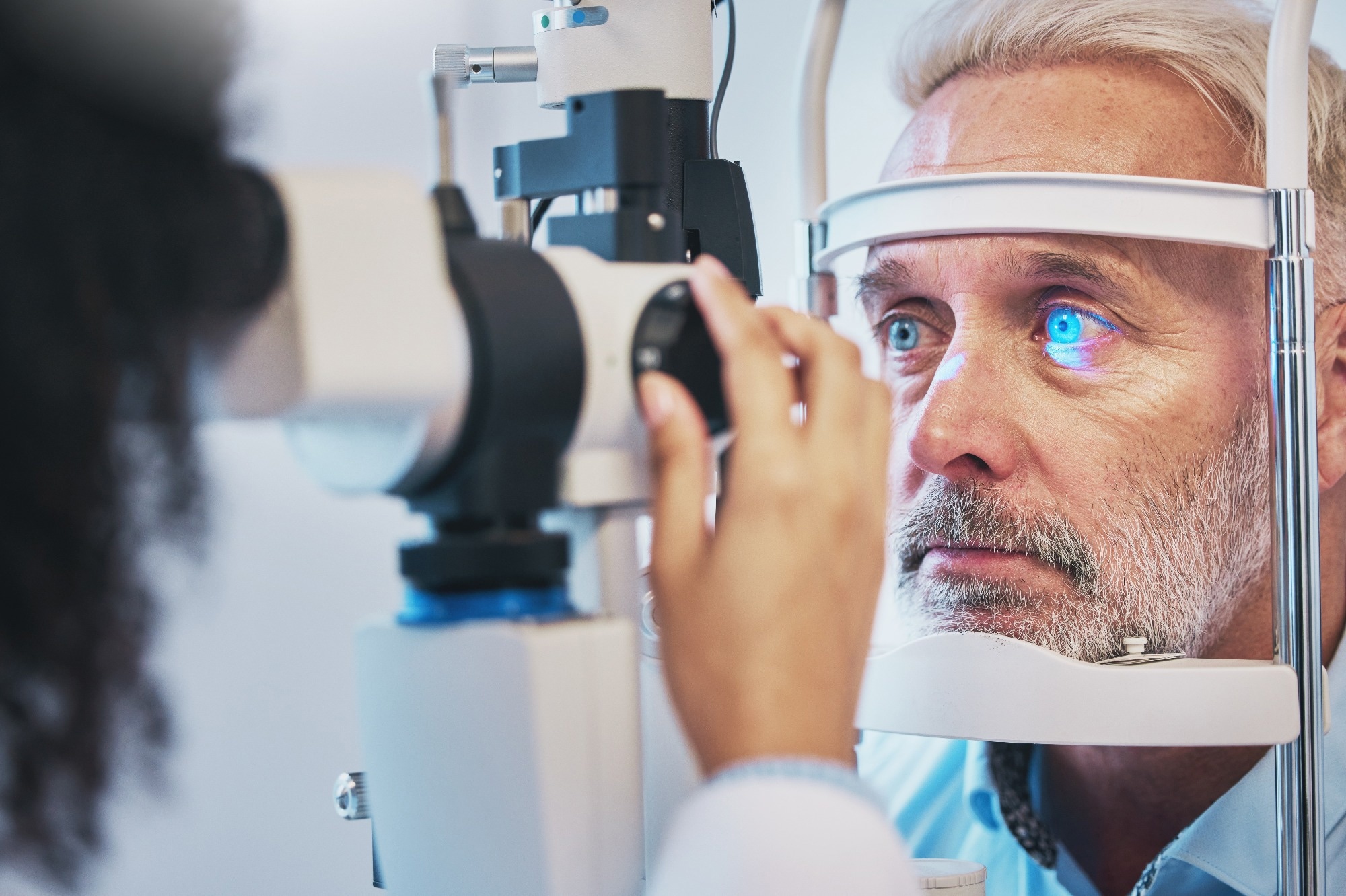In a recent study published in Scientific Reports, researchers investigate the association between cannabis use and primary open-angle glaucoma (POAG), a severe non-communicable eye disease.
 Study: Cannabis use and the risk of primary open-angle glaucoma: A Mendelian randomization study. Image Credit: PeopleImages.com - Yuri A / Shutterstock.com
Study: Cannabis use and the risk of primary open-angle glaucoma: A Mendelian randomization study. Image Credit: PeopleImages.com - Yuri A / Shutterstock.com
Glaucoma and its association with cannabis
Glaucoma is an umbrella term used to describe eye diseases characterized by irreversible damage to the optic nerve. The condition and its symptoms can progress slowly, thus causing many patients to be unaware of its presence.
The only accurate diagnostic approach for glaucoma is a comprehensive dilated eye exam. Despite its silence and slow progression, glaucoma is responsible for more than 78 million permanent losses of vision globally, thereby making it the leading cause of blindness in the world today.
Researchers estimate that glaucoma cases remain on the rise, with its prevalence estimated to increase to over 100 million by the year 2040. The most common glaucoma subtype is primary open-angle glaucoma (POAG), which is caused by excessive long-term intraocular pressure (IOP). IOP is a modifiable risk factor, with eye drops relieving the condition and subsequently delaying glaucoma onset; however, most sources of the IOP remain unknown.
Studies over the past decade have identified ocular side effects associated with persistent eye drop use. This has led many patients and their medical advisors to choose between potentially faster-progressing glaucoma or a different visual disease. As a result, the search for novel treatment modalities to improve IOP outcomes has been the focus of recent research.
Cannabinoids, the bioactive compounds derived from cannabis plants, appear to mitigate IOP. However, most studies on the potential therapeutic effects of cannabinoids for IOP were short-term and comprised small study cohorts, thus limiting the reliability of these results. Furthermore, most forms of cannabis consumption involve the use of tobacco as a 'mixer,' thus making studies into their individual effects challenging.
About the study
In the present study, researchers collated data from multiple medical repositories, including the United Kingdom Biobank, 23andMe, and the International Cannabis Consortium. The dataset comprised genome-wide association study (GWAS) summary data from 184,765 individuals with European ancestry, making it the most extensive study of cannabis users to date. Inclusion criteria were the self-reported lifetime use of cannabis, with data assorted and corrected from sex, ancestry, age, and method of genotyping.
Additionally, data from a previous meta-analysis conducted by the Lundbeck Foundation Initiative for Integrative Psychiatric Research (iPSYCH), deCODE, and the Psychiatric Genomics Consortium Substance Use Disorders working group were added to the dataset. This dataset comprised 17,068 cannabis users with dependence or abuse symptoms, as well as 357,219 controls.
Mendelian randomization (MR) is a statistical model of genetic data processing that may present a solution to this ongoing conundrum. Researchers used MR to identify single nucleotide polymorphisms (SNPs) associated with lifetime cannabis use, abuse, or dependence, following which they calculated the amount of phenotypic variance explained by IOP. The MR_Steiger directionality test was used to test causality and eliminate SNPs strongly correlated with POAG but weakly associated with cannabis consumption.
Five SNPs associated with lifetime cannabis use and eleven SNPs associated with cannabis use disorder were selected in the primary analysis, while 267 and 157 SNPs associated with lifetime cannabis and cannabis use disorder, respectively, were selected in the secondary analysis."
Study findings
Of the over 550,000 individuals sampled, about 16,000 were diagnosed with POAG. However, while the meta-analyses identified SNPs associated with cannabis use or cannabis disorder, these SNPs did not overlap with SNPs associated with POAG.
Statistical analyses revealed that the odds ratios (ORs) of POAG in users as compared to never users was 1.03, which is statistically insignificant. Adjustments for sex, age, ancestry, and genotyping did not alter these results.
These findings highlight that cannabis use, or even abuse over a lifetime, does not result in IOP and thereby contribute to POAG. While the study does have inherent limitations due to its binary nature of only considering users or never users, it was able to establish a lack of an association between cannabis use and any form of glaucoma.
Journal reference:
- Katsimpris, A., Baumeister, S., Baurecht, H., et al. (2023). Cannabis use and the risk of primary open-angle glaucoma: A Mendelian randomization study. Scientific Reports 13(1); 1-7. doi:10.1038/s41598-023-45872-z